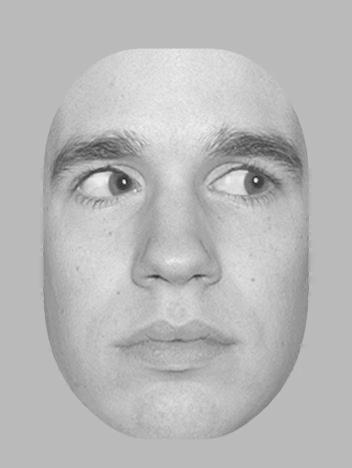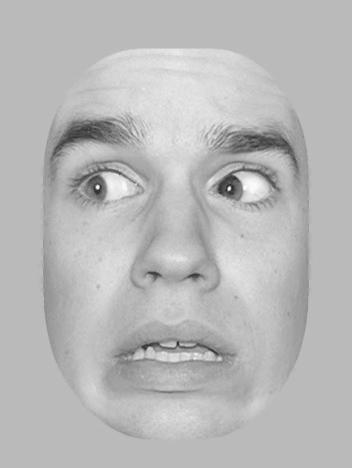Social orienting in autism
M.C. de Jong, H. van Engeland, C. Kemner.
The attentional effect of gaze shifts is influenced by emotion and spatial frequency, but not in autism.
Am Acad Child Adolesc Psychiatry (2008), 47:443-454.
[link] [PDF]
This research project was honored with the Talma-Eijkman Award 2008 for outstanding undergraduate research work and the publication was subject of an editorial by Dr. A. Klin in the same issue of the journal:
"From a clinical standpoint, there is mounting evidence that infants with autism fail to spontaneously orient to people [...] This is the context for the puzzle and its illumination in the study by de Jong and colleagues in this issue of the Journal. [...] In an innovative fashion, de Jong and colleagues raise the possibility and demonstrate it in their experiments that the ability to follow the directional cue of gaze shifts is intact in children with autism when the face stimuli are neutral. Yet, when faces are emotionally expressive, the children with autism fail to display the facilitation or potentiation effect generated by expressive faces."
Klin A.
In the eye of the beholden: tracking developmental psychopathology.
Journal of the American Academy of Child and Adolescent Psychiatry (2008), 47:362-363). [PDF]
Short explanation:
When you see someone else's eyes move to the left or right, your attention will automatically be drawn to the location this person is looking at. This automatic shift of attention is a very basic social interaction. In typically developing children it is larger when the other person has a fearful expression than when he or she has a neutral expression. Moreover, recordings of brain activity indicate that fearful expressions are processed more thoroughly than neutral expressions.
Autism is a neurodevelopmental disorder that affects the way that people communicate and interact with others. We measured brain activity while children with autism were looking at movies of faces that moved their eyes to the left or right. Our findings indicated that autistic children do shift their attention to the location the other person is looking at. However, the attention shift and the associated neural responses were the same regardless of the emotion of the other person (fearful or neutral). This indicates that autistic children use social information differently and, specifically, do not process the emotional status of another person.
Gaze cue stimuli:
Gaze cues reflexively direct attention to the gazed at location. In typically developing children this attentional effect is larger for emotional gaze cues (like the one on the right below) than for neutral gaze cues. In autistic children the attentional effect is the same for emotional and neutral gaze cues.


Publication abstract:
Objective: Impaired gaze following is an important hallmark of autism spectrum disorders (ASD) in clinical settings. Yet, ASD subjects perform normally on laboratory tasks involving gaze shifts. We investigated this contradiction, hypothesizing that impaired gaze following in ASD is not related to basic impairments in attentional orienting but to impaired emotion perception and abnormal processing of spatial frequencies (i.e. local and global information).
Method: We tested 30 high-functioning, school-aged children with ASD and 30 age- and IQ-matched controls on a task involving gaze shifts that cue the location of targets. The cueing faces differed in emotionality and were filtered for different spatial frequencies. We recorded behavioral responses (reaction times) and brain responses (event-related potentials, i.e. ERPs).
Results: ASD subjects performed normally when neutral faces were used. However, emotional faces elicited modified face and gaze cue processing in control subjects, but not in the ASD subjects. Furthermore, the control group biased toward the use of low spatial frequencies (global information) to process gaze cues, while the ASD group biased toward the use of high spatial frequencies (local information).
Conclusions: We conclude that impaired gaze following in ASD is related to impaired emotion processing. Moreover, ASD subjects show an abnormal reliance on local information to process gaze cues.